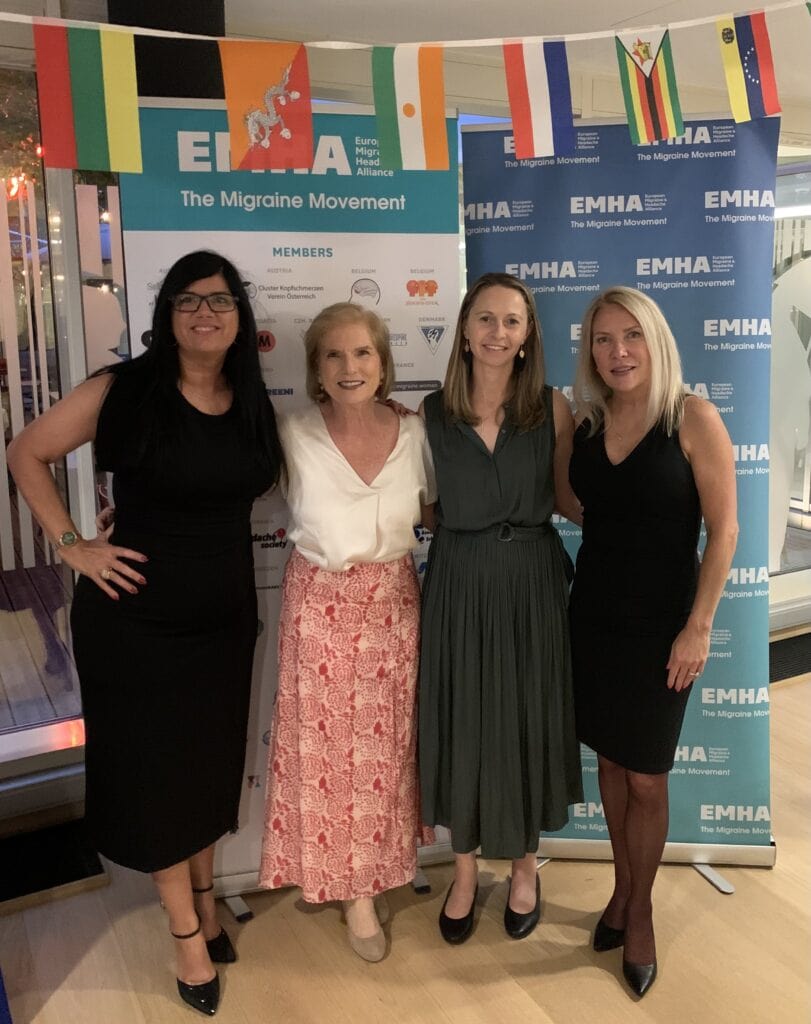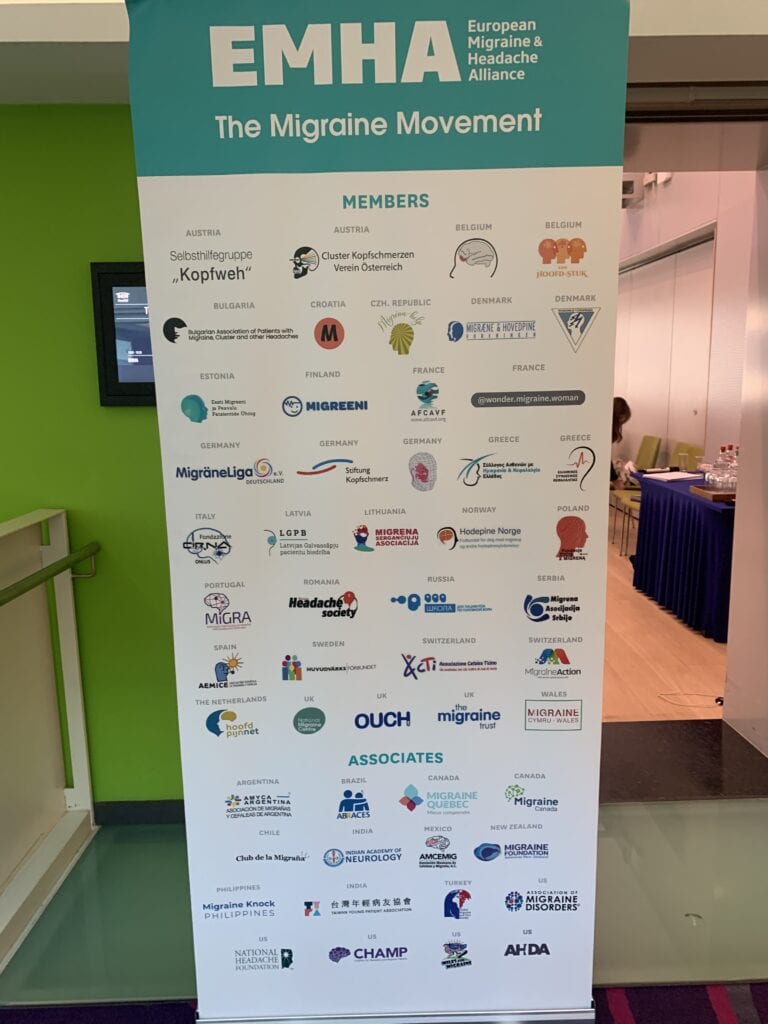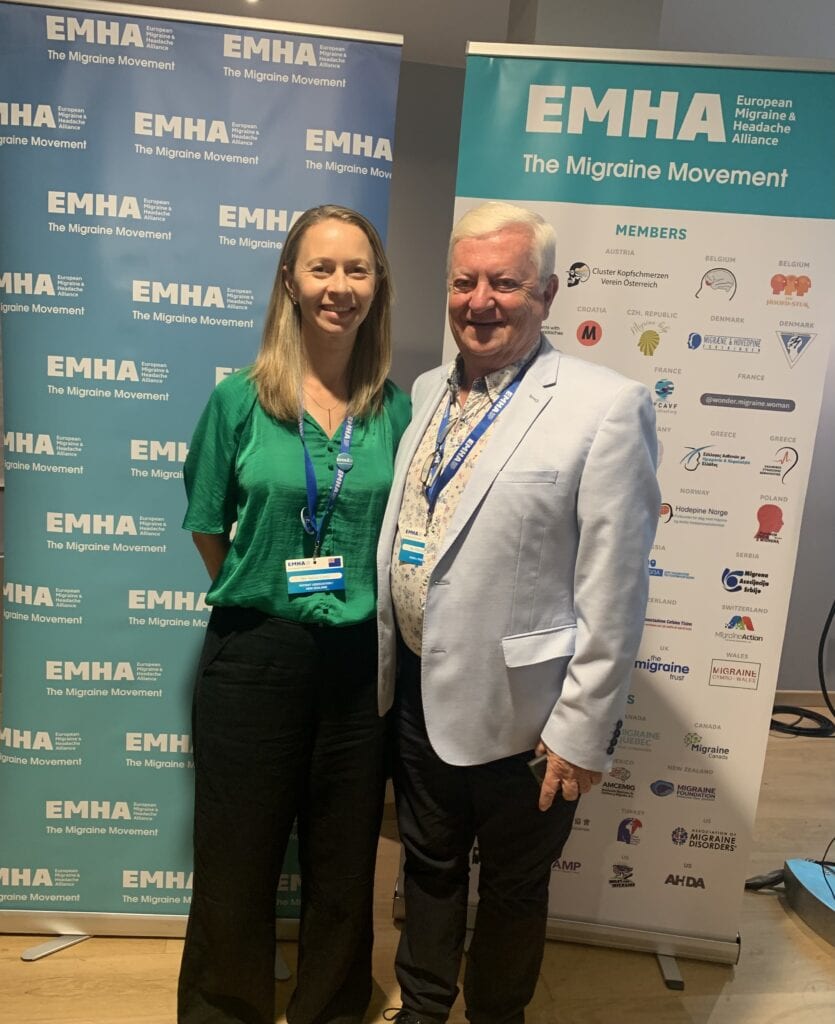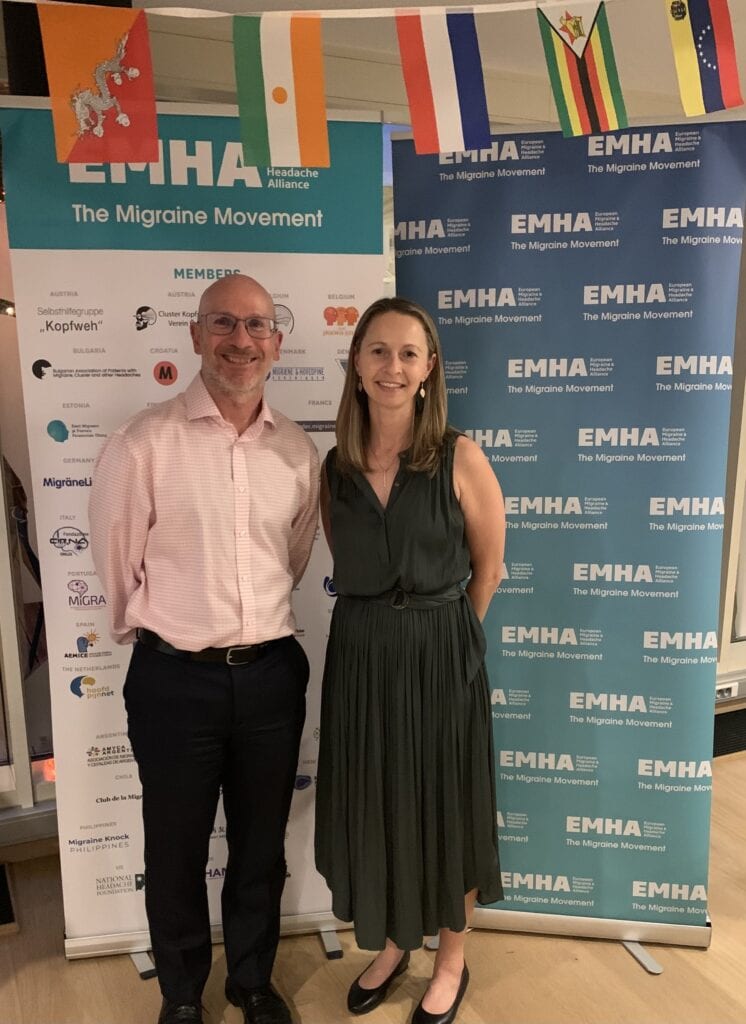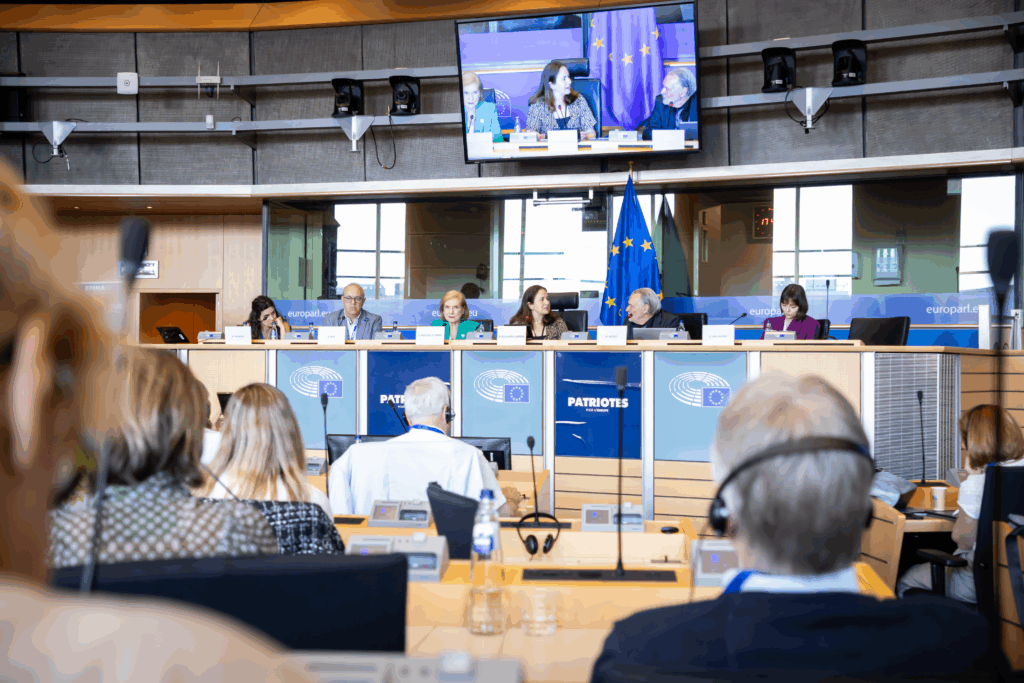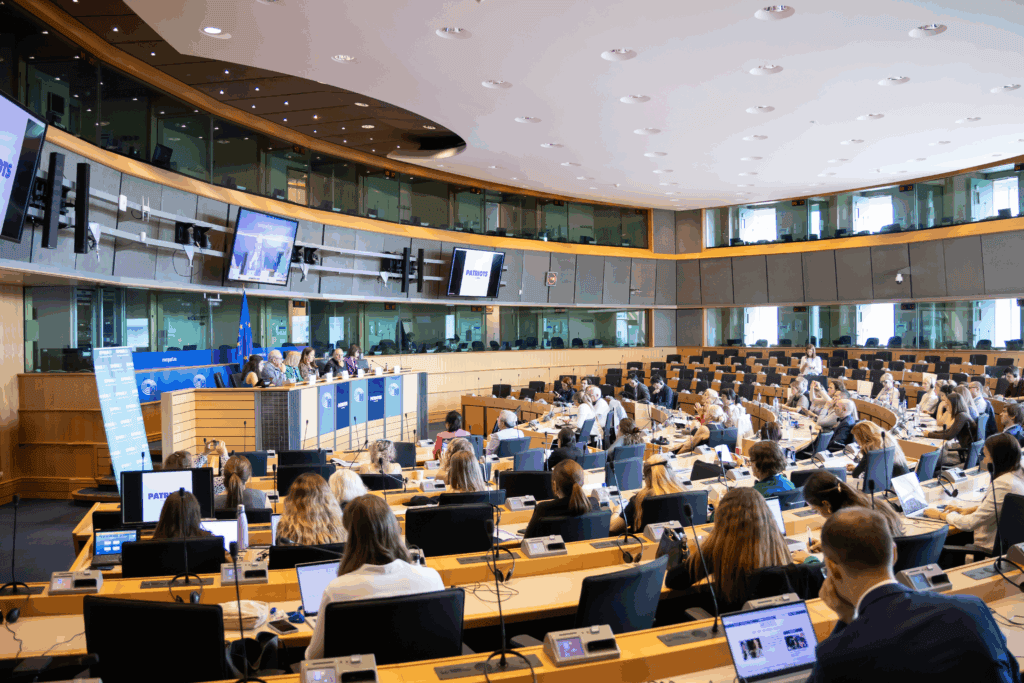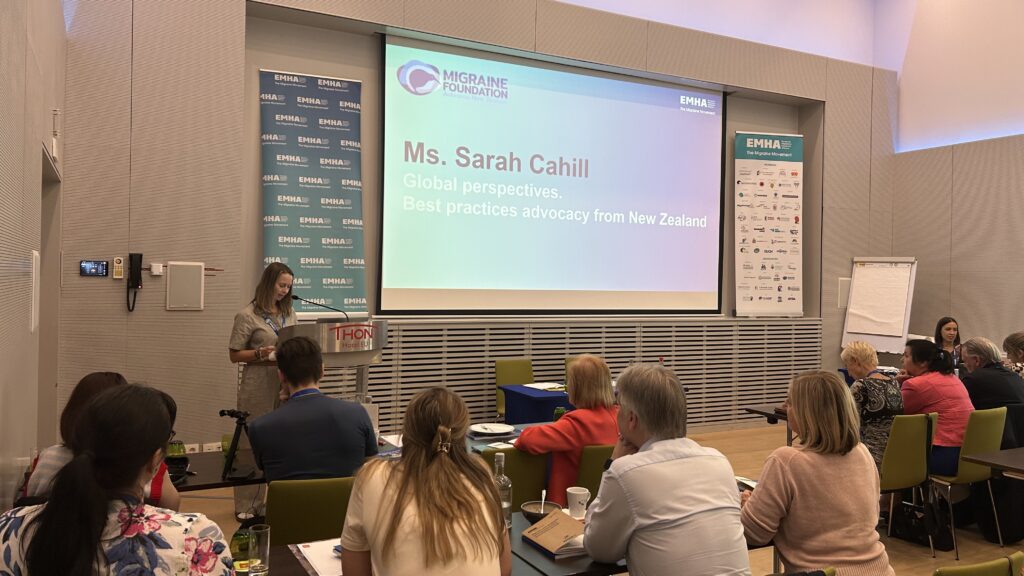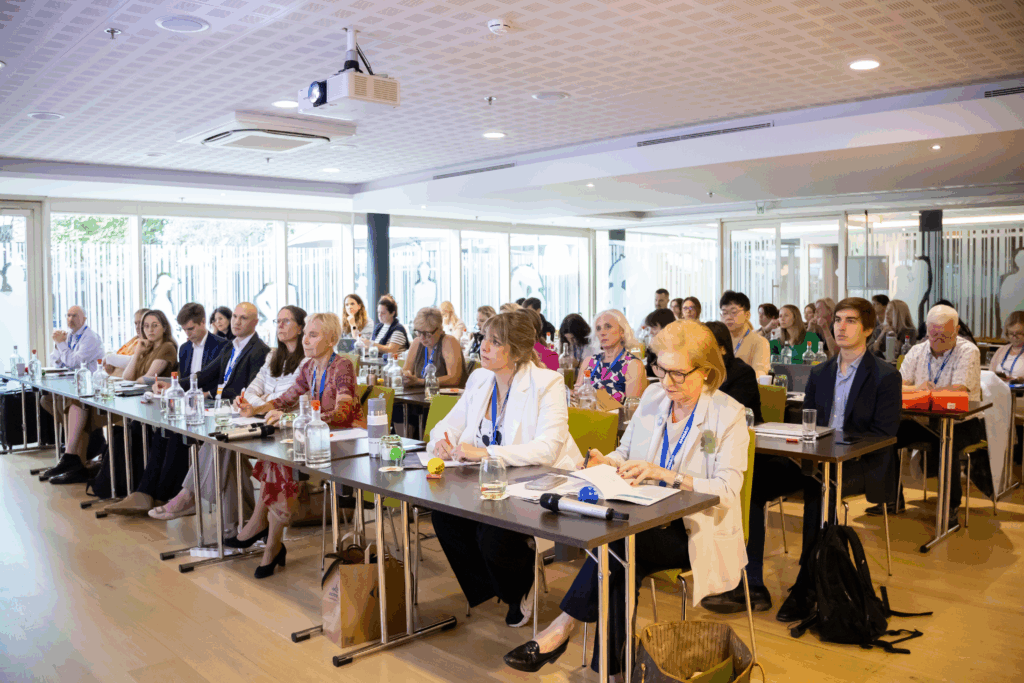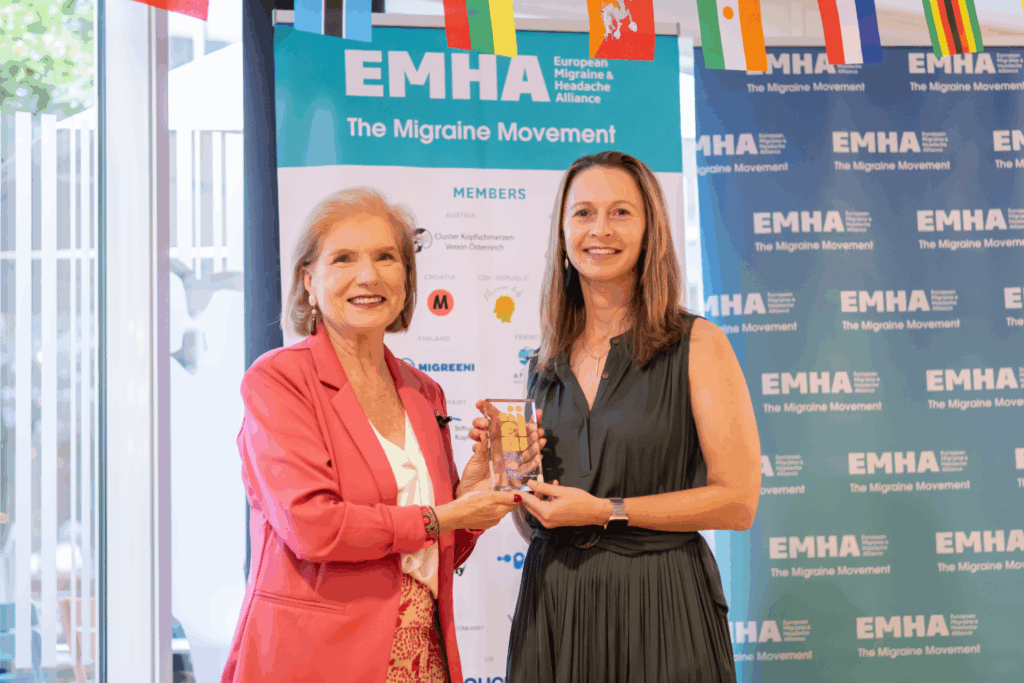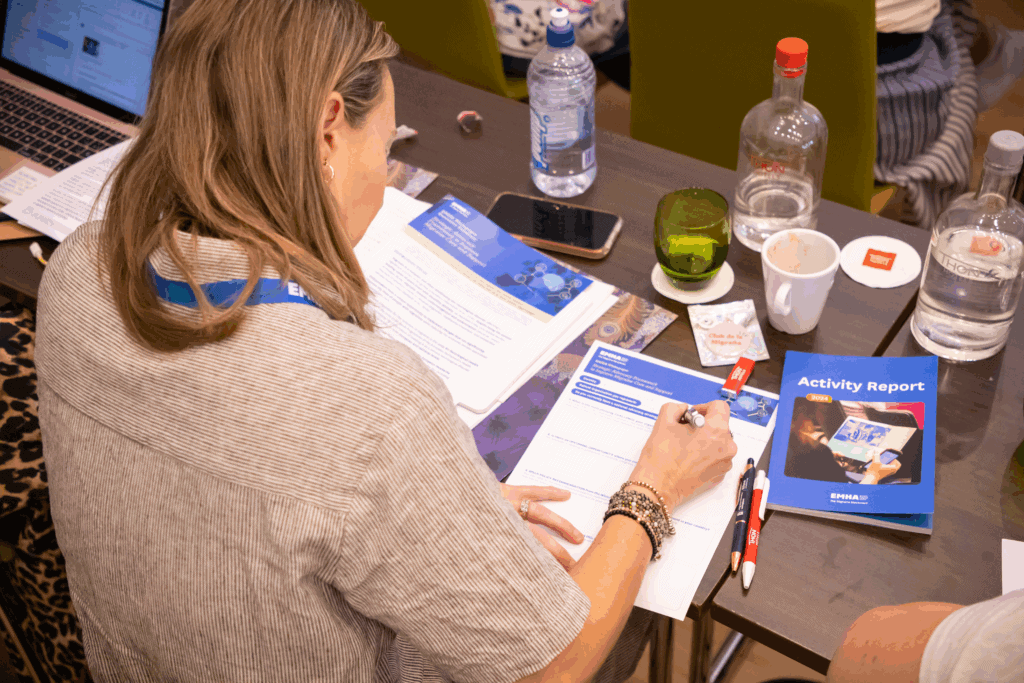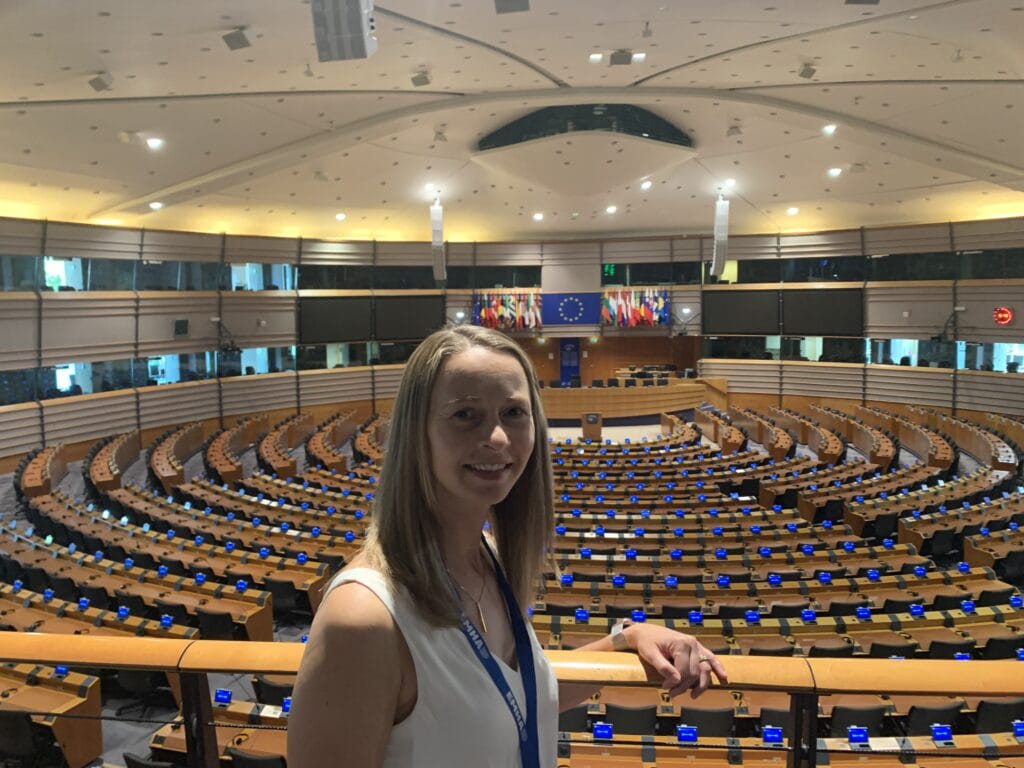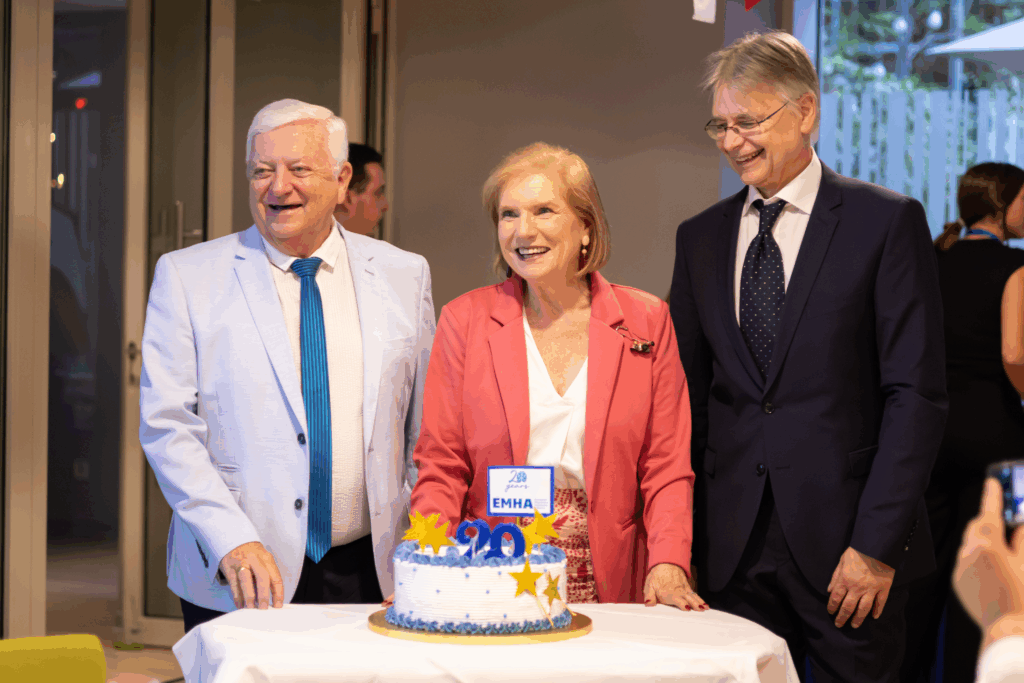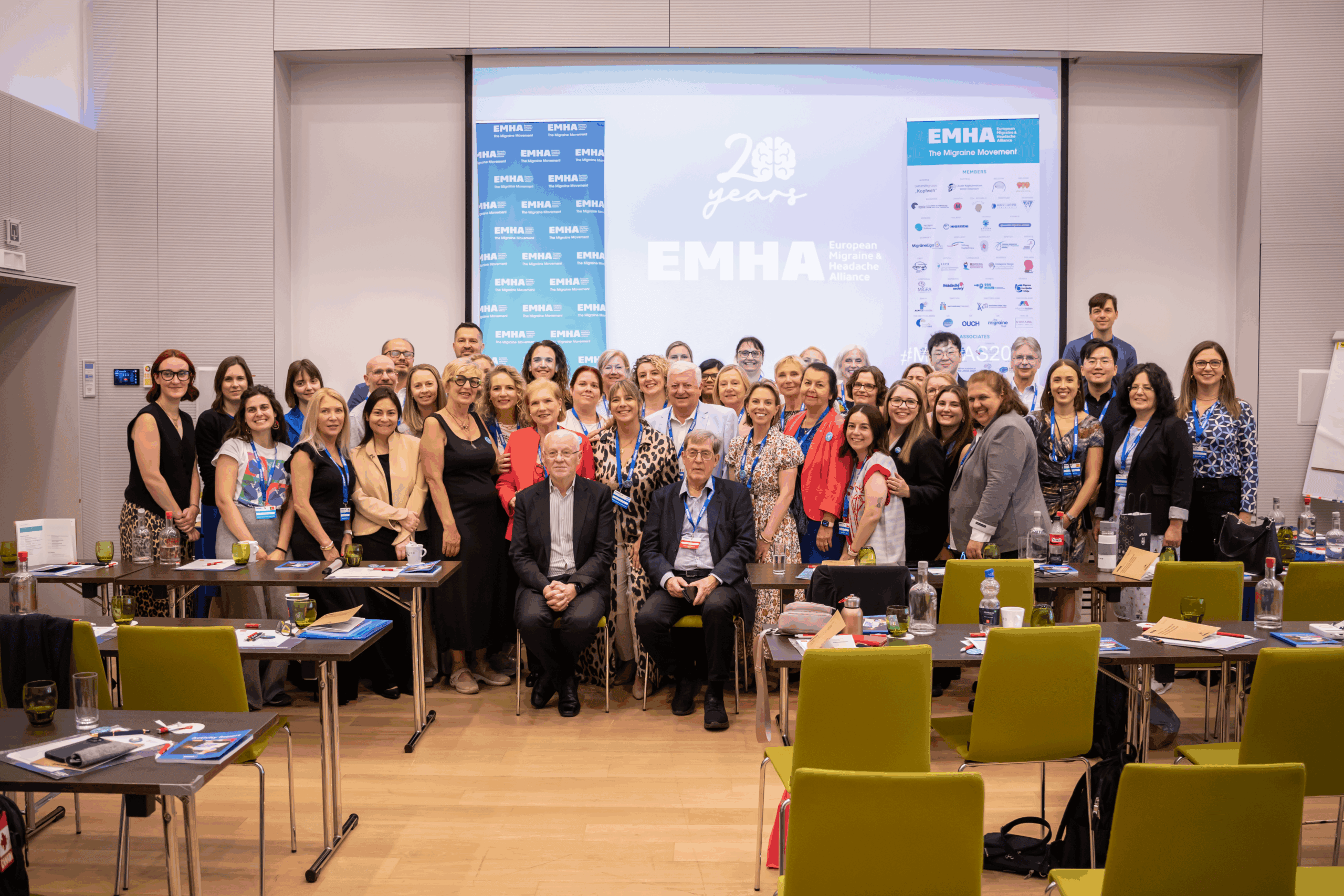Written by Sarah Cahill, Migraine Foundation co-founder
In June I had the privilege of attending the European Migraine and Headache Alliance (EMHA) Migraine and Headache International Patient Associations Summit (MHIPAS) in Brussels, Belgium.
I was one of 40 people involved in migraine advocacy from 29 countries to attend the 3-day conference. It truly was a global migraine event, with representatives from The Migraine Trust (UK), Migraine Canada, Migraine Quebec, The Association of Migraine Disorders (US), Miles for Migraine (US), Cluster Headache Association Austria, AMYCA Argentina, Headache Society of Romania, ABRACES (Brazil), Alliance for Headache Disorders Advocacy and The Headache Alliance, Headache Foundation Germany, People with Headache Korea; just to name a few. Representatives from other organisations such as pharmaceutical companies and industry also attended.
Day one began in the early afternoon with our visit to the European Parliament. After a brief session about the history of the EU and a quick tour of the building, we attended a roundtable discussion with members of the European Parliament. The discussion was led by EMHA’s executive director, Elena Ruis de la Torre, who was joined by Professor Peter Goadsby (neuroscientist and expert in headache research based at King’s College London) and Dr Maria-Magdalena Wysocka-Bakawska (neurologist and founder of the Polish Migraine Association), who addressed the high burden of migraine and stressed the need for equitable access to migraine treatments. There was a particular focus on the need for migraine to be recognised as a serious public health issue and included in the upcoming Neurological Health Strategy of the EU Commission.
The conversation continued with a panel discussion with Dr. Samuel Díaz (neurologist and headache specialist), Dr. Reto Agosti (neurologist and Swiss politician), Chiara Salvagnin (Alleanza Cefalalgici, Italian patient association) and Rita Paizinho (MiGRA Portugal, Portuguese patient association).
Requests to the EU Parliament were the same regardless of country – help raise awareness about the true impact and burden of migraine, change EU policy (this includs removing restrictions about having to try and fail other preventive medications before accessing anti-CGRP medications), improved education of healthcare professionals and generally improving migraine care.
The EMHA has developed an EMHA EU Roadmap summarising the call to action.
Although this call to action is aimed at EU countries, there was recognition that all countries would benefit from a collective response and action.
The morning of day two featured presentations from Professor Peter Goadsby and Professor Lars Edvinson (Professor and senior consultant at Lund University/Hospital, Sweden). These sessions were an update about what we know about migraine and how diagnosis and treatment is improving. Professor Goadsby reiterated that migraine is the top burden of neurological disorders that is reversible, and if it was treated more effectively it would significantly improve the lives of people with migraine and reduce the downstream costs of migraine to the economy and socially.
Elena Ruis de la Torre and Prof Peter Goadsby also presented about the proposed EMHA new migraine scoring system that will be launched at the upcoming International Headache Summit in Brazil in September.
The focus of the afternoon was sharing global perspectives about migraine. I had the honour of being the voice of people with migraine in New Zealand and presenting about our migraine landscape.
My presentation included an overview of how our health system works, where New Zealand is at in terms of anti-CGRP medications, what other preventive and acute medications people in NZ can access, some of our challenges, what our charity has done over the past 3 years and what the next 12 months looks like. It may sound cliche but it was a privilege to be able to share with so many global migraine organisations about our country and to feel like the 753,00 New Zealanders with migraine matter globally.
Following my presentation were presentations from advocates from Canada, Chile, Argentina, Austria, USA, Brazil and Turkey.
My biggest takeaways from these presentations is that New Zealand is not alone in many of the challenges we face regarding migraine care and treatment. Globally, migraine still carries the heavy stigma of not being recognised as a disabling, neurological condition (as we know, it’s more than just a headache); access to medications is challenging for so many (while our access to triptans is poor, with only 2 available in NZ, Romania only has sumatriptan) and even for those who can access funded anti-CGRP medications, there are many challenges to access (such as insurance, equity and having to fail 3 preventive treatment options to qualify); lack of knowledge about migraine by health professionals; lack of understanding in the workplace, universities and schools; and lack of research.
We then had the opportunity to all contribute to a strategy session about what we can do as a global collective to improve migraine care. I had to contribute my ideas about what New Zealand’s most pressing challenge is, any opportunities to raise or address this issue and thoughts around EMHA’s recent white paper. It was hard to come up with just a couple of sentences that summarised my thoughts.
I decided our biggest challenge was access to international standard of care treatment options, including the full range of triptans, anti-CGRP medications, Botox and neuromodulators. While much of our work has been around this, it made me think about more opportunities our organisation, and our community, can do to keep pushing this agenda.
The third question about priorities of the white paper was difficult. The three priorities of the EMHA white paper are:
- Improving timely screening and diagnosis
- Expanding coverage and early access to therapeutic innovations
- Political commitment of migraine as a neurological disease.
You have 2 minutes to decide – what would you choose and why? GO!
Hard isn’t it. All three are so incredibly important.
I chose number 2: Expanding coverage and early access to therapeutic innovations. My rationale was that New Zealand can’t continue to be left behind in terms of medication access, we need this to improve.
After an intense but incredibly informative second day, it was time to relax as a group. This year EMHA celebrates its 20th anniversary, so we all attended a celebration dinner (which included cake). This was a great chance to chat with attendees about their organisations – how they work, how they get their funding, what projects they’re focusing on. In a casual conversation type of way.
I also accepted a Migraine Friendly Workplace award on behalf of our charity – our first charity award! It now sits pride of place on my bookshelf.
The night ended European style with some dancing and karaoke. I participated in the dancing, I left the karaoke to those who can sing. We all had to submit our favourite song before we attended the event, which I’d forgotten I had done. We were given a songbook with everyone’s choices. I’d chosen Weather with You by Crowded House. Good choice I think. Not that I was willing to get up and sing it.
The final day included presentations by Dr. Oleks Gorbenko, Ipsen; Rob Music, The Migraine Trust; Trine Pilgaard, Pfizer; and Arianna Rizzi, FleishmanHillard EU. Key topics covered included the indirect costs of migraine and its socioeconomic impact. The research presented was particularly interesting as it was about triptan use, the burden of disease and other real world data. This tied in nicely with our current research work, researching triptan use in New Zealand and Fiona’s research project that’s scoping out how we can undertake a cost-of-illness study in New Zealand.
I gained so much from attending the conference, most notably from the personal connections I made on behalf of Migraine Foundation. Meeting in person instead of via a screen, the conversations, group brainstorming and sharing of resources and ideas was invaluable.
I couldn’t have attended without the financial support of the European Migraine and Headache Alliance, who funded my flights, accommodation and meals. A huge thank you for inviting us to attend.
My hope is that I represented those with migraine in New Zealand clearly and effectively and I’ll use my improved knowledge of migraine globally and new relationships with worldwide ‘colleagues’ to continue to improve the migraine landscape in New Zealand.
